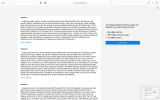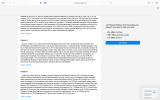Fellow Hunters,
As for “Premium Bullets”, I am very fond of Swift brand A-Frame.
That said, most of my critters have been taken with heavy for caliber, round nose soft point (“RNSP”) bullets, such as Hornady brand, “Interlock”, Remington brand, Core-Lock” (or however they spell it) plus Sierra RNSP and Winchester “Power Point bullets.
I wish A-Frames were available for ALL common hunting cartridges with round nose configuration.
Having said that, I definitely prefer old timey cartridges, such as the 6.5x55 / 160 gr RNSP, .30-30 Winchester 170 gr Flat Nose Soft Point, the boring old .30-06, 220 gr RNSP, 8x57S, 180 to 196 gr RNSP, 9.3x62 Mauser, 286 gr RNSP, and my all time favorite global hunting cartridge, (for non dangerous large animals, such as Alaska moose & bison, African eland, zebra & waterbuck, etc.) the .375 H&H, 300 gr RNSP and Nosler Partition.
For my blue collar money, if I was to use the 9.3x62 / 9.3x74R and or the .375 H&H, for African buffaloes and similar critters definitely, I would use the Swift A-Frame 286 gr - 300 gr.
(However, my personal preference for those begins at .40 bore and up - .416 Rigby, .450-400 Jeffery, .404 Jeffery and such likes).
IMO, the various .458’s and .500’s are none too much for such tough and potentially violent animals.
At normal hunting ranges (again, out to about 300 meters), I do not care for today’s trendy, super-velocity cartridges.
And, having seen erratic performance from hollow point bullets (either shattering like glass against heavy bone or total failure to expand at all, in soft flesh), I much prefer lead core bullets, with round nose or flat nose profile, with plenty of lead showing at the tip.
To quote Robert Ruark, “use enough gun”.
That definitely does NOT mean higher velocity, for most (most) normal hunting ranges (under about 300 meters).
If a hunter cannot hit typical game animals slap bang in the vitals within that distance, with a heavy for caliber RNSP bullet from such as the .30-06, .375, etc, from field positions (especially from standing over the shooting sticks), they don’t need a wiz-bang ultra velocity cartridge, they simply need to practice more.
For longer shots (out beyond about 300 meters), I do like higher velocity cartridges, such as the .300 H&H, the 7MM Remington Magnum and similar cartridges, loaded with spitzers and semi-spitzers.
Even with those faster ones, I prefer heavy for caliber bullets (180 gr .30 and 160 gr to 175 gr 7MM).
Just my dos centavos worth.
Stay on the front sight,
Velo Dog.





